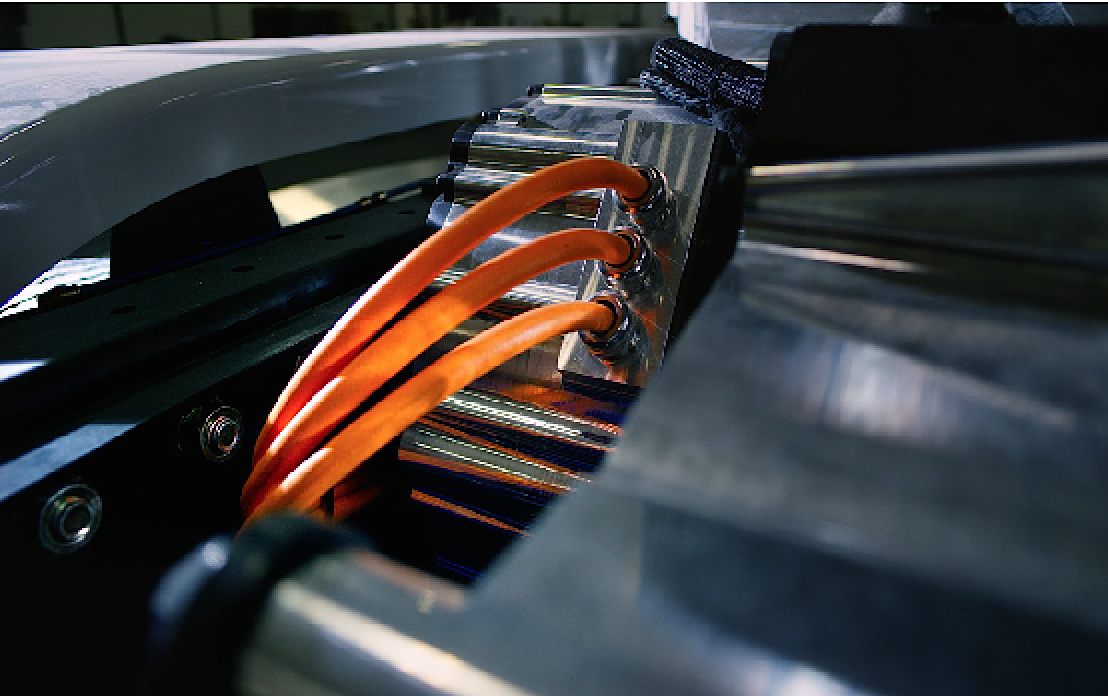Short- and Long-Haul Trucking: Driving Towards an Emissions-Free Future
Trucking is getting greener as sensor-based technologies make diesel engines more efficient and lithium-ion batteries and hydrogen fuel cells offer an alternative to petroleum.
Trucking is vital to the way we live. Long-haul trucks carry what’s needed to where it’s needed quickly and affordably, and short-haul trucks trek the final miles between warehouses and stores. It’s fair to say that life as we know it would not be possible without trucking. However, while trucking may be essential, it comes with environmental costs associated with diesel engine emissions. Standards are getting tougher around the world, and some European companies are considering outlawing carbon-based emissions altogether.

Today, the commercial transportation industry is making diesel engines greener through the use of emissions control systems (ECSs). Sensors are key components within ECSs, detecting the quality and level of the diesel emission fluids and measuring the pressure and temperature required to reduce pollutants in the after-treatment emission systems. While cleaner diesel engines are an improvement, however, they still create carbon-based emissions. The future may be new technologies that rely on cleaner forms of energy. Two such technologies are lithium-ion batteries and hydrogen fuel cells.
Lithium-Ion Battery Technology
Lithium-ion chemistry is the most common and fastest-growing battery technology on the market. Lithium-ion (Li-Ion) batteries have no memory and do not require a full discharge. Typical commercial transportation industry batteries range in voltage from 300 to 600 volts. To achieve these higher voltages, smaller battery cells are manufactured, stacked in multiples, and then packaged together to create higher-voltage batteries.
The technology is relatively straightforward. When a vehicle is operational, a discharge cycle in which the lithium ion atoms in the anode are ionized and separated from their electrons is activated. Lithium ions then move from the anode and pass through a known electrolyte to the cathode, where they recombine with their electrons and are electrically neutralized. During this process, the lithium-ion batteries are capable of generating very high voltages and charge storage capability, so extreme caution must be exercised when coming into contact with these batteries.
Over the last few years, lithium-ion has become the battery chemistry of choice for the new generation of electric, hybrid, and plug-in hybrid vehicles, including development work by Tesla and others that is especially geared for the long-haul trucking industry. Electric vehicle battery performance continues to steadily improve, but there remain key parameters that need to be addressed to achieve an effective, efficient battery management system. Safety is of paramount importance, but packaging, performance, and cost play similarly important roles. Thermal management must also be taken into consideration to avoid potential fire hazards. Another key factor to note is that these batteries are currently around 100 times less energy-dense than gasoline.
Hydrogen Fuel Cell Technology
One promising new solution is a fully electric long-haul truck powered by hydrogen fuel cells in development by Nikola Motor Company. Nikola plans to begin production of the Nikola One in 2021 and have 14,000 hydrogen-powered trucks on the road by 2028. While the technology behind hydrogen fuel cells may be sophisticated, the science is a fairly basic electrochemical process.

Nikola engineers originally reached out to TE Connectivity to discuss its DEUTSCH product line and, since, have also worked with TE to identify connectivity solutions including sensors, infotainment systems, and high-voltage cable assemblies.
First, hydrogen gas meets an anode inside a fuel cell. Together with a catalyst, the anode splits the hydrogen in two, creating a positively charged hydrogen ion (i.e., a proton) and an electron. Attracted by the cathode, the protons pass through an electrolytic membrane, while the electrodes, which are unable to pass through the membrane, flow through a wire outside the fuel cell, eventually arriving at the cathode and completing the circuit. At the cathode, both hydrogen particles mix with oxygen in the air where they form water and generate current. Thus, the only emission product generated by hydrogen fuel cells is distilled water.
Hydrogen fuel cells create current and will continue to recharge the batteries as long as there is hydrogen in the tank. Nikola has stated that a truck with a 70-kilogram tank can expect to have a range of 500–800 miles.
Hydrogen fuel cells are already used in forklifts and port trucks that are helping to pave the way for more challenging fully electric Class 8 trucks like the Nikola One.

This close-up image of the Nikola One gearbox showcases TE Connectivity’s high-voltage cables, which help the hydrogen fuel cells charge the truck’s batteries and power the drive train.
Electrification and Connectivity
For the successful introduction of a major innovation like a fully electric Class 8 truck, safety and reliability is of the utmost importance. Achieving electrification and connectivity solutions capable of providing such fail-safe performance will require suppliers to the commercial transportation industry to utilize a systems-level approach to problem solving. Ideal solutions will effectively combine high-tech sensor and interconnection technology to create the most cost-effective, robust, and elegantly integrated designs.

TE Connectivity electrification and connectivity solutions provide fail-safe performance in several critical systems within Nikola’s no-emissions, ultra-high-performance commercial trucks.
Interconnection Technology
Connectors and cabling are primary components in the electrification systems of high-voltage Li-ion and hydrogen fuel cell vehicle technologies. For instance, specially designed high-voltage connectors effectively eliminate any possibility of destructive arcing between the terminals during the unmating process to protect the system from high-voltage potentials. They also offer full 360° shielding to prevent electromagnetic pulses and interference (EMP and EMI) resulting from high-current switching from interfering with critical circuitry.
Electric vehicle connectors and cabling must operate in harsh road environments with a high degree of durability and reliability. Cable insulation, for example, not only has to be able to withstand high voltages without arcing, it must also be impervious to the fluids commonly utilized in the engine compartment area, resistant to the high temperature generated by current flow, and be fully shielded to prevent EMI interference along the full length of the cable. System cables must also be fully compatible with the connector solutions to ensure the highest possible performance.
Further, today’s trucking industry utilizes many advanced electronic systems under the hood that require the reliable high-speed transmission of data, not only within the vehicle, but also to third-party service providers, which adds security to the list of data transfer demands. The connector solutions employed in these systems must be small, lightweight, rugged, reliable, and capable of transmitting data at high speeds with complete accuracy.

TE Connectivity’s AMP+ HVP 800 (pictured) and AMP+ HVP 1100 high-voltage connector systems are designed for flexibility, offering a wide range of options for hybrid and electric vehicle device applications.
Sensors
Sensor technologies, including resolver, temperature, current, humidity, fluid quality, fluid level, position, and pressure sensors, are key to the reliable performance of various electric motor applications. Sensors ensure the stability of fully electric long-haul trucks around curves. Each wheel on the Nikola One has its own wheel motor, enabling the independent wheel control required to make the wheels on the inside of the curve turn more slowly than those on the outside when navigating curves and turns to reduce the chances of fishtailing or rollovers. These individual wheel motors are informed by a network of sensors that sample data from each wheel, the steering wheel, brakes, and the accelerator pedal thousands of times per second, calculates how each wheel should respond, and transmits that data to the truck’s onboard computer. The motion control system then sends this information to each individual wheel motor to tell it how to react.

TE Connectivity’s AST4300 stainless steel pressure transducers/transmitters have an attractive price/performance ratio and a rugged construction ideal for use in hazardous-area applications, including hydrogen fuel systems.
Enabling an Emissions-Free Future
Commercial transportation industry leaders are making impressive improvements to both Li-ion and hydrogen fuel cell technologies, but they must still address another critical aspect: building an infrastructure that allows for convenient, reliable, and cost-effective refueling.
The current plan for Li-ion battery technology is to build cross-country recharging stations capable of recharging electric vehicle batteries in relatively short intervals. The current plan for hydrogen fuel cell technology is to build a network of hydrogen production plants powered by an electric grid and other forms of green energy at truck stops across the country.
The outlook for fully electric Class 8 trucks looks bright, and is expected to provide a more affordable, efficient, sustainable, and profitable method of trucking in the relatively near future.
For more information, visit TE Connectivity’s The Future of Heavy-Duty Trucking page for product news, infographics, white papers, videos, and an on-demand webinar with Nikola Motor Company.
Like this article? Check out our other New Technology, e-mobility, and 2019 articles, and our Transportation Market Page.
- Short- and Long-Haul Trucking: Driving Towards an Emissions-Free Future - November 5, 2019





